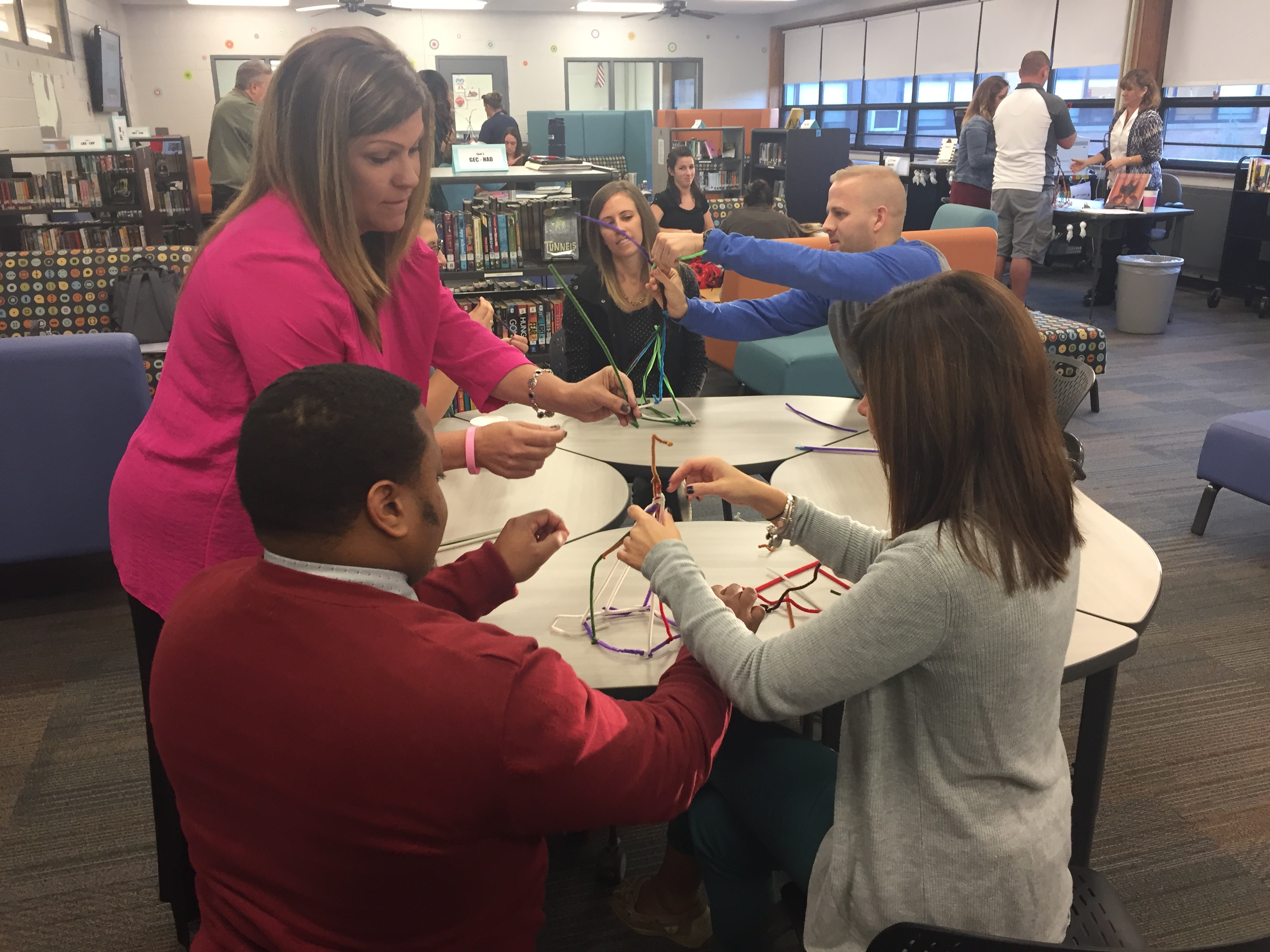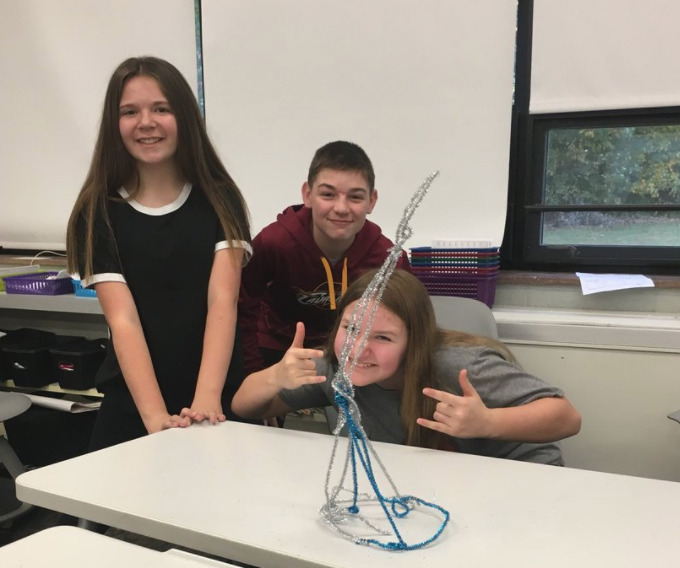
Professional development is a critical focus within Mentor Public Schools. In order to impact a school’s culture, building leaders and instructional coaches provide quality, ongoing, embedded professional development. In keeping with the essence of maker culture, we want our teachers to experience our maker program through multiple entry points to ensure its integration into our culture. One method Mentor Schools used to amplify our district’s culture of making focused on implementing school-wide making activities, first with staff and then with students, on a monthly basis.
Advisory design challenges consist of three primary components:
Mentor Schools quickly learned in our professional development journey that our teachers need to be exposed to making in order to build their confidence to incorporate it into their teaching practice. Since implementing the monthly design challenges, an increased number of teachers and students have accessed the makerspace room at Ridge Middle School and have integrated tinkering into the curriculum. Additionally, students have shown a real enthusiasm for the design challenges, and we anticipate that their desire to participate in more of them will encourage teachers to explore maker learning further.
“Our students evolve during their making journey over the course of the year. Their confidence and creativity grow as they embark on the many challenges.” – Ericka Blackburn, Principal of Ridge Middle School
In order to continually expose teachers to making, the instructional coaches and administrative team strategically designed monthly faculty meetings around a specific design challenge. At each faculty meeting, staff members work in teams and compete in a common design challenge, such as creating the highest tower, the strongest weight bearing chair, or the longest marble run.
Faculty meetings have evolved into energetic hour-long collaboration sessions to design, build, test and redesign creative structures. The “winning” team is awarded a homemade trophy and bragging rights until the next design challenge.
Afterwards, staff reflect on the activity and their own learning process. These discussions highlight the principles of growth mindset and 21st century skills that motivate our interest in maker learning in general. This time also provides an opportunity for teachers to plan how they will introduce the design challenges to students in their homeroom the next week.
Take a look at two slide presentations that we have used in our monthly design challenges, and feel free to use them as templates for introducing design challenges in your school:

Following the faculty meeting, students tackle the same design challenge that staff members encountered the previous week. The students at Ridge Middle School are exposed to the design process on a monthly basis when working with peers to develop novel solutions to design challenges during their advisory period. Since the staff has already completed the challenge, they are able to better guide the students in their design challenges. In this way, both staff and students are continually experiencing maker activities and our maker culture is constantly growing.
“When our design fails, we figure out what didn’t work and try again. We are always learning and working together during our design challenges.” – 7th Grade Ridge Student
Students and teachers need to channel their creative energy on the design challenges — not on the logistics of managing the challenges. Consider establishing predictable systems to help streamline workflows. For example, a simple routine can help students take care of choosing and returning their own supplies to minimize teacher time spent on preparation.
We make a conscious effort to choose activities that require inexpensive materials and can be tailored to different ages, settings, and time-frames. Each of the following challenges could be used as the monthly challenge with both students and teachers.
As part of each month’s design challenge, a school-wide competition is held between teachers and students, with top designs showcased for all to see in the main corridor of the school. These school-wide challenges provide an opportunity for teachers and students to learn alongside one another and to celebrate the diversity of solutions that the full school community can come up with when it tackles a common challenge.
“I love trying to create the best design in our Advisory. What’s even better is beating my TEACHERS!” – 6th-grade Ridge Middle School student
Back to Develop a Maker Mindset
This work is licensed under a Creative Commons Attribution- NonCommercial- ShareAlike 4.0 International License.

We want to hear from you!
Please take this 5-minute survey and help us serve you better.
